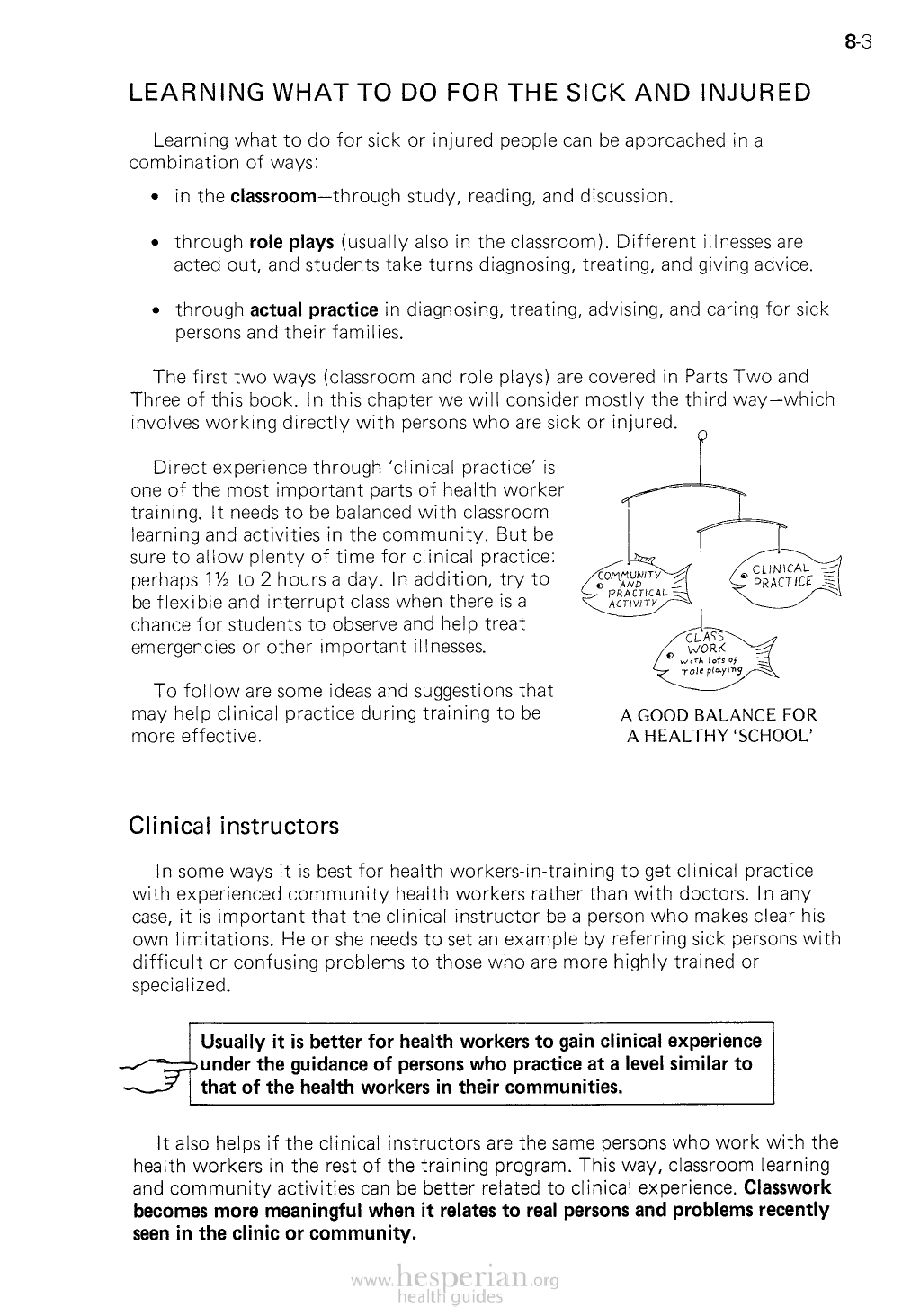
8-3
LEARNING WHAT TO DO FOR THE SICK AND INJURED
Learning what to do for sick or injured people can be approached in a
combination of ways:
• in the classroom—through study, reading, and discussion.
• through role plays (usually also in the classroom). Different illnesses are
acted out, and students take turns diagnosing, treating, and giving advice.
• through actual practice in diagnosing, treating, advising, and caring for sick
persons and their families.
The first two ways (classroom and role plays) are covered in Parts Two and Three
of this book. In this chapter we will consider mostly the third way—which involves
working directly with persons who are sick or injured.
Direct experience through ‘clinical practice’ is
one of the most important parts of health worker
training. It needs to be balanced with classroom
learning and activities in the community. But be
sure to allow plenty of time for clinical practice:
perhaps VA to 2 hours a day. In addition, try to
be flexible and interrupt class when there is a
chance for students to observe and help treat
emergencies or other important illnesses.
To follow are some ideas and suggestions that
may help clinical practice during training to be
more effective.
A GOOD BALANCE FOR
A HEALTHY’S SCHOOL’
Clinical instructors
In some ways it is best for health workers-in-training to get clinical practice
with experienced community health workers rather than with doctors. In any
case, it is important that the clinical instructor be a person who makes clear his
own limitations. He or she needs to set an example by referring sick persons
with difficult or confusing problems to those who are more highly trained or
specialized.
Usually it is better for health workers to gain clinical experience
under the guidance of persons who practice at a level similar to
that of the health workers in their communities.
It also helps if the clinical instructors are the same persons who work with the
health workers in the rest of the training program. This way, classroom learning
and community activities can be better related to clinical experience. Classwork
becomes more meaningful when it relates to real persons and problems
recently seen in the clinic or community.